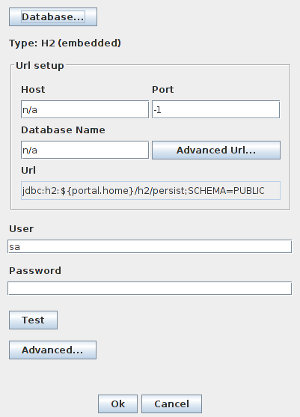Appboard/old/configuration database
A default installation of AppBoard / enPortal will use an in-memory H2 database that runs within the same process as the main application. This is the easiest and most convenient configuration but in clustered and/or high availability environments it may be necessary to configure an external shared database.
The configuration database is used to store a variety of system configuration:
- enPortal users
- enPortal channel configuration
- enPortal Single Sign-on tokens
- AppBoard (versions 2.3 or later) Stacks, Boards, Widgets, filter rules, etc...
This database is only used for configuration data and the resource requirements are very minimal if using an external database.
Using an External Configuration Database
enPortal / AppBoard includes a utility to set up and configure an external configuration database. Please note this assumes the appropriate JDBC driver is installed, and you have an external database to connect to along with access credentials:
- Run the setup tool in the [INSTALL_HOME]/server/bin:
- > portal dbsetup
- This will launch a graphical user interface to assist with the configuration.
- Run the portal dbsetup" command in ${INSTALL_HOME}/bin directory. When you run this command, there is a GUI that assists with selecting the database type and configuring the database connection. This tool saves changes to the file: /server/webapps/enportal/WEB-INF/config/persist.properties, with the specific configuration details that you provide for you database connection. If your server does not have a graphical display, you can modify this file directly in lieu of running the dbsetup command.
- Configure a database connection in the dbsetup GUI, by completing the following:
- Click the Database button and select your type of database from the selection list (e.g. Oracle)
- Set the Host and Port fields to match the IP location of your database (as resolved from the enPortal/AppBoard server).
- Set the Database Name field to match the name of the database created to store the enPortal/AppBoard data.
- Set the User and Password fields to match the database user and password that were configured on your database to control access.
- Test the Connection by clicking the Test button to verify the database connection settings.
- Select Ok to save the changes and exit the tool.
If you need to actually install/create the external database the following guide may be of assistance Configuring Databases.

